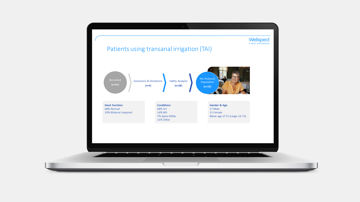Explore
Clinical evidence and webinars to provide you with in depth knowledge about bladder and bowel care.
Clinical evidence and webinars to provide you with in depth knowledge about bladder and bowel care.

Recently published studies summarised in an easy way to help you stay on top of the latest research in bladder care.
key:global.content-type: Article
This article explores strategies that can help address challenges faced by men who are in the initial stages of learning to use intermittent catheterisation.

key:global.content-type: Article
In this webinar you will hear from Dr. Rebecca Haddad who is a physician specialising in Physical Medicine and Rehabilitation with a focus on geriatrics at Sorbonne Université in Paris, France. Her clinical, research, and teaching work is dedicated to the care of people ageing with disabilities, with a particular focus on bladder ageing.

key:global.content-type: Article
In this webinar you will hear from Dr. Gianluca Sampogna, a urologic surgeon working at the Spinal Unit, Niguarda Hospital, Milan, a referral centre for bladder, bowel, and sexual health issues in spinal cord injured population. He is the Head of the Sexual Health Program which offers many solutions from sexual counselling to rehabilitation, from pharmacotherapy to surgery.

key:global.content-type: Article
In this webinar you will hear from Dr. Gianna Rodriguez, clinical Professor from Michigan US. She is the Director of the Spinal Cory Injury (SCI) Program in the Department of Physical Medicine and Rehabilitation (PMR) at Michigan Medicine in the US.

key:global.content-type: Article
As life expectancy increases, there is a growing population of ageing individuals with spinal cord injuries (SCI). Aging exacerbates many of the challenges faced by SCI patients, particularly when it comes to bladder and bowel management.

key:global.content-type: Article
This article summarises the key challenges and recommendations identified in clinical practice guidelines (CPGs) governing an ageing population with a spinal cord injury. It also highlights gaps and areas of improvement in existing guidelines.

key:global.content-type: Article
This study provides valuable insights into the experiences of individuals undergoing IC that optimise patient care and support.
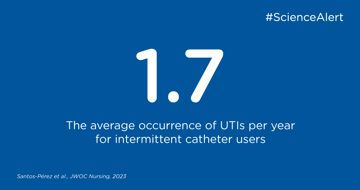
key:global.content-type: Publication Highlight
In this article we sum up the key findings and recommendations of a 2023 study by Bauer et al. which explores intermittent catheterisation (IC) by children and adolescents in school settings.

Keeping up-to-date and determining the veracity of scientific articles and clinical studies can be overwhelming, so we’ve put together a checklist to help you.

key:global.content-type: Publication Highlight
The traditional view of urine sterility has been challenged by the discovery of the urinary microbiome, meaning a mix of bacteria and microorganisms within the urinary tract. This unique relationship between microbes and humans is still not fully understood but has gained a lot of attention in clinical research in the last decade.

In this publication highlight you can read about the identification, assessment, and treatment of urinary incontinence and bowel control issues.
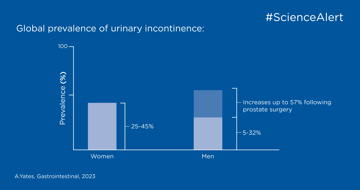
key:global.content-type: Article
Recurrent UTIs in children with neurogenic bladders constitute high risk of leading to severe kidney damage and need to be an area of attention. This study is useful in determining treatments and proactive measures for preventing recurrent UTIs.
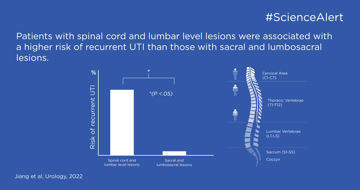
Ortega et al conducted this retrospective study at a pelvic floor disorder center to evaluate the impact of constipation on urogenital symptoms in women. Bowel problems in women are hypothesized to be associated with the presence and severity of urogenital symptoms and linked to pelvic floor dysfunction.
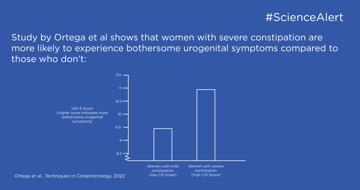
key:global.content-type: Article
Autonomic dysreflexia (AD) is an episodic uncontrolled elevation of systolic blood pressure sometimes accompanied by bradycardia. If not managed it can lead to cerebral and spinal hemorrhage, seizures and pulmonary edema.
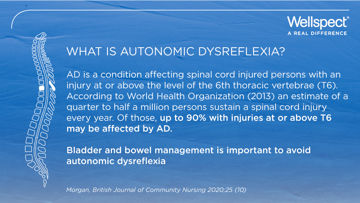
key:global.content-type: Article
Introduction of a no-touch catheter/technique for intermittent catheterisation seems to be well accepted both by caregivers and patients and it is not necessarily associated with higher costs.

key:global.content-type: Article
A patient-centric tool to facilitate goal attainment scaling in neurogenic bladder and bowel dysfunction: path to individualisation. People with nervous system disorders often experience ...

key:global.content-type: Article
According to WHO the problem of antimicrobial resistance is so serious that it threatens our modern healthcare system. By 2050 it may cause 10 million deaths or more if we lose our ability to use effective antibiotics.

key:global.content-type: Article
At Wellspect HealthCare we take our environmental responsibility seriously. We continuously work to minimise the environmental impact related to our products. We ensure that proper materials are used and all applicable production requirements are followed.

key:global.content-type: Article
For those who cannot empty their bladder the normal way, intermittent catheterisation is the therapy of choice to maintain urethral health. Complications are common but when hydrophilic single-use catheters entered the market, the risks of UTI dropped significantly.

key:global.content-type: Article
With more than 30 years on the market, LoFric has been used and documented in several ways. In addition to efficiently emptying the bladder, LoFric’s versatile use includes treatment and prevention of recurrent strictures, administration of chemotherapy by bladder instillation, and resolution of rare complications.

key:global.content-type: Article
Bladder management with intermittent catheterisation is associated with complications. The most severe and common one is UTI. Single-use, hydrophilic-coated catheters lower the risk of UTIs and have been reported as both convenient and the preferred choice for people who rely on intermittent catheterisation as their bladder management.

key:global.content-type: Article
Catheter associated urinary tract infections (CAUTI) are common in the hospital setting with consequential morbidity and mortality. The risk of bacterial adhesion and invasion of the urinary tract increases with use of an indwelling catheterisation and may be reduced by adopting intermittent catheterisation using hydrophilic single-use catheters.

key:global.content-type: Article
Patient adherence plays a key role in a successful and cost-effective catheterisation treatment. A patient who feels part of the decision-making, in control of their options and how they work with their lifestyle is more inclined to stick with their therapy and subsequently experience a good clinical outcome.

key:global.content-type: Article
Urine often has a high concentration of particles and low content of water. This is referred to as high osmolality. Urine osmolality has a direct effect on catheter lubrication and plays an important role for people who use hydrophilic catheters. A catheter with a surface osmolality in balance with urine is key to reducing withdrawal friction.

key:global.content-type: Article
A lubricated catheter is recommended to reduce damage to the urethra and lower the risk of hematuria which is a common complication. A cross-over study comparing different hydrophilic catheters showed an even lower frequency of hematuria in patients who chose LoFric.

key:global.content-type: Article
Extensive studies support scientific literature claiming that use of hydrophilic catheters reduce urethral trauma and urinary tract infections. This in turn can minimise the need for antibiotics. Because of these benefits, we now know ...
key:global.content-type: Article
Single-use hydrophilic catheters were developed in the early eighties to address long-term complications of intermittent catheterisation seen when reusing plastic catheters with add-on lubrication. As reported by Wyndaele and Maes and Perrouin-Verbe et al.

key:global.content-type: Article
A surprisingly high number of patients reuses catheters intended for single use every day putting them at risk for unnecessary complications. Single use hydrophilic catheters for intermittent catheterisation lower the risk for short and long-term complications and are a convenient and preferred choice for many patients.

key:global.content-type: Article
A urethral stricture is an abnormal narrowing of the urethra and is often caused by trauma or inflammation. As catheterisation is one cause of strictures, non-traumatic catheterisation technique and catheter material are essential parts in preventing the occurrence of these complications.

key:global.content-type: Article
Benign prostatic hyperplasia (BPH) is a leading diagnosis among males. Approximately 100,000 men are treated with transurethral prostate (TURP) surgery each year, making it one of the most common surgical procedures in the United States and several other countries.

key:global.content-type: Article
Available clinical evidence supports the strategy to always consider intermittent catheterisation as the first therapeutic choice, before considering the use of an indwelling catheter. Intermittent catheterisation is the first therapeutic choice and is a safer ...

key:global.content-type: Article
Bladder instillation is used for local administration of drugs into the bladder. Examples being treatment of interstitial cystitis and cancer. Drugs are delivered via a catheter, and a hydrophilic-coated surface such as that of the LoFric catheters, reduces the risk for trauma associated with instillation therapy.

Recently published studies summarized in an easy way to help you stay on top of the latest research in bowel care.
key:global.content-type: Article
Take part of clinical evidence that speaks to the improved outcomes of using TAI in paediatric patients when coupled with an individualised approach upon initiation of TAI.

key:global.content-type: Publication Highlight
Transanal irrigation's influence on gut microbiota could have a positive effect on the immune system and contribute to reduced UTIs, as per this clinical study by Futura et. al.
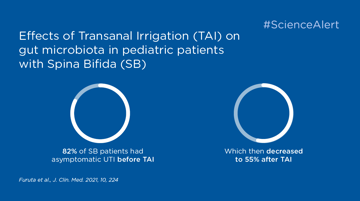
key:global.content-type: Publication Highlight
Take part of clinical data on transanal irrigation as a mean to manage neurogenic bowel in the pediatric population with Spina Bifida
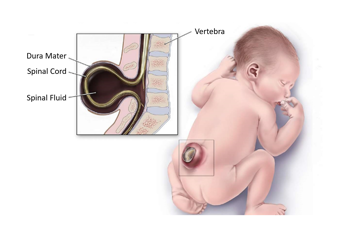
key:global.content-type: Article
In this webinar you will hear from Dr. Rebecca Haddad who is a physician specialising in Physical Medicine and Rehabilitation with a focus on geriatrics at Sorbonne Université in Paris, France. Her clinical, research, and teaching work is dedicated to the care of people ageing with disabilities, with a particular focus on bladder ageing.

key:global.content-type: Article
In this webinar you will hear from Dr. Gianluca Sampogna, a urologic surgeon working at the Spinal Unit, Niguarda Hospital, Milan, a referral centre for bladder, bowel, and sexual health issues in spinal cord injured population. He is the Head of the Sexual Health Program which offers many solutions from sexual counselling to rehabilitation, from pharmacotherapy to surgery.

key:global.content-type: Article
In this webinar you will hear from Dr. Gianna Rodriguez, clinical Professor from Michigan US. She is the Director of the Spinal Cory Injury (SCI) Program in the Department of Physical Medicine and Rehabilitation (PMR) at Michigan Medicine in the US.

key:global.content-type: Article
As life expectancy increases, there is a growing population of ageing individuals with spinal cord injuries (SCI). Aging exacerbates many of the challenges faced by SCI patients, particularly when it comes to bladder and bowel management.

key:global.content-type: Article
A cost-effectiveness analysis of Navina Smart on adult patients affected by neurogenic bowel dysfunction.

key:global.content-type: Article
Transanal Irrigation (TAI) is known to be a successful therapy to treat LARS, and in this study, Orlandi et al explore the use of TAI as a treatment option for women with endometriosis who experience LARS-like symptoms.

key:global.content-type: Article
This publication by Falletto et al. explores the benefits of using transanal irrigation for people with FBD and LARS, pointing to significant improvements in patient's quality LARS score during the study period.

Keeping up-to-date and determining the veracity of scientific articles and clinical studies can be overwhelming, so we’ve put together a checklist to help you.

key:global.content-type: Publication Highlight
In this publication highlight you can read about how to manage bowel dysfunction in individuals with cauda equina syndrome.
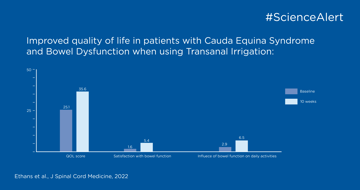
In this publication highlight you can read about the identification, assessment, and treatment of urinary incontinence and bowel control issues.

key:global.content-type: Article
In this scientific review you will learn more about incomplete emptying causes and treatment.

Ortega et al conducted this retrospective study at a pelvic floor disorder center to evaluate the impact of constipation on urogenital symptoms in women. Bowel problems in women are hypothesized to be associated with the presence and severity of urogenital symptoms and linked to pelvic floor dysfunction.

key:global.content-type: Article
In this science article a combined retrospective and cross-sectional survey study investigates chronic idiopathic constipation in children and bowel regimen with bowel irrigation, also called transanal irrigation (TAI).
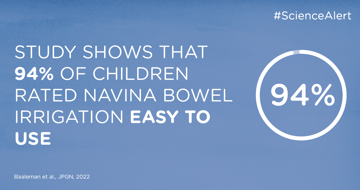
key:global.content-type: Article
Autonomic dysreflexia (AD) is an episodic uncontrolled elevation of systolic blood pressure sometimes accompanied by bradycardia. If not managed it can lead to cerebral and spinal hemorrhage, seizures and pulmonary edema.

key:global.content-type: Article
In this publication highlight you can read about pediatric constipation causes, impact and management.
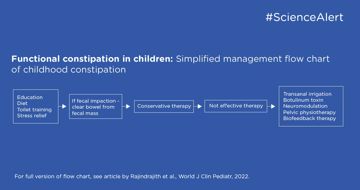
key:global.content-type: Article
A patient-centric tool to facilitate goal attainment scaling in neurogenic bladder and bowel dysfunction: path to individualisation. People with nervous system disorders often experience ...

key:global.content-type: Article
In this summary you can read about what a neurogenic bowel is and goals and recommendations for treatment.
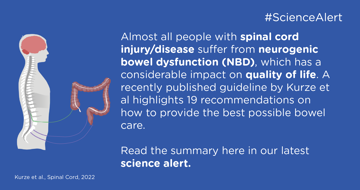
key:global.content-type: Article
This is a summary of the published article Long-term efficacy and safety of transanal irrigation in multiple sclerosis by Passananti et al. 2016

key:global.content-type: Article
Bowel problems in children are common, up to 29% of children can be affected by functional constipation and functional faecal incontinence, where the symptom origin is not known.

key:global.content-type: Article
Bowel disorders are common in conditions affecting the nervous system, such as spinal cord injury, multiple sclerosis, spina bifida and severe Parkinson’s disease, and have great impact on self-esteem, personal relationships and social life.

key:global.content-type: Article
Faecal incontinence (FI) means involuntary loss of rectal content such as solid and liquid stool, mucus or flatus. FI is not a diagnosis but a symptom. It is considered a ...

key:global.content-type: Article
Transanal irrigation (TAI) is a well-documented and safe bowel management therapy. Today, compliance is the major issue with TAI therapy, and may be improved through greater knowledge of which patient is best suited ...

key:global.content-type: Article
Bowel dysfunction is surrounded by misconceptions and taboos that may interfere with treatment and that may result in self-medication not always innocuous to the patient care.

key:global.content-type: Article
This is a summary of the results from a short-term evaluation of a novel electronic transanal irrigation system, Navina Smart, in patients with neurogenic bowel dysfunction. The clinical study investigated compliance, perception, satisfaction, and safety of Navina Smart.
